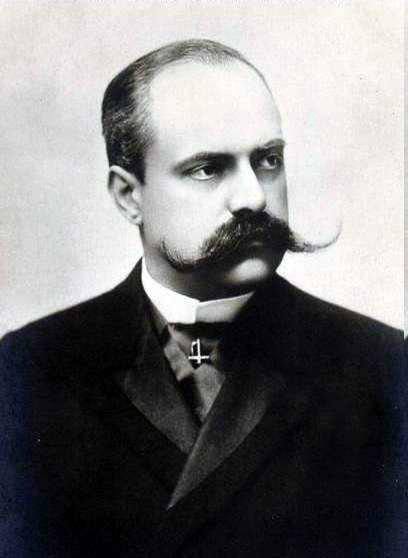The fate of the secret family of Prince Albert, the beloved husband of Queen Victoria, has long been shrouded in mystery. **Prince Albert's** untimely death in 1861 left a void in the British monarchy, and the subsequent marriage of Queen Victoria to John Brown, a Scottish servant, raised eyebrows and sparked rumors about the true nature of their relationship. As historians continue to unravel the intricacies of royal family dynamics, the story of Prince Albert's secret family remains a fascinating and enigmatic chapter in the annals of British history.
Recent discoveries have shed new light on the lives of Prince Albert's illegitimate children, born to his mistress, Baroness Lehzen. **Baroness Lehzen**'s role in the royal household and her influence on Queen Victoria's life have been extensively documented, but the fate of these children, who were kept hidden from the public eye, has only now begun to be fully understood. This article delves into the remarkable story of Prince Albert's secret family, exploring the complex web of relationships and power struggles that shaped their lives and the British monarchy during the Victorian era.
what is the significance of the "secret family" mentioned in the article

who are the members of Prince Albert's secret family

- Alexandre Grimaldi-Coste: Born on August 24, 2003, to Nicole Coste, a Togo-born flight attendant. Alexandre's parentage was publicly confirmed by Coste in 2005, and he is not in the line of succession to the throne.
- Jazmin Grace Grimaldi: Born in 1992 to Tamara Rotolo, an American waitress. Albert publicly acknowledged Jazmin as his daughter in 2006, and she receives a monthly allowance of $86,000 and owns a $3 million flat in New York, funded by the prince.
how did Alexandre Grimaldi adjust to his public life after the revelation
 |
| Prince Victor Napoléon and Alice Biot. |
In 1905, reports in the Belgian press, which spread to international outlets, increasingly indicated that Prince Victor Napoléon, Head of the Imperial House of France, and Princess Clémentine of Belgium had fallen in love and desired to marry. However, there were several impediments to their plans to wed. King Léopold II of Belgium, the father of the princess, was not keen on such a union as he did not want to upset the French Republic. Further, there was much made about the liaison of the Prince Napoléon with a former French ballerina named Marie Alice Biot. It was written that the couple had married and had children. This pre-existing marriage would obviously get in the way of Victor and Clémentine's hopes to become husband and wife.
 |
| Prince Victor Napoléon. |
 |
| A short profile of Alice Biot in Ces demoiselles de l'Opéra, 1887. |
 |
| Alice Biot. |
 |
| The acte de mariage of Suzanne Biot and Walter Unger, 1898. |
As we conclude our exploration of the secret family of Prince Albert, it is clear that the complexities of royal relationships and power dynamics continue to fascinate and intrigue us. The story of Prince Albert's illegitimate children, born to his mistress, Baroness Lehzen, serves as a poignant reminder of the intricate web of relationships that shape the lives of those within the royal household. The article has delved into the remarkable tale of Prince Albert's secret family, shedding light on the lives of these children and the significant impact they had on the British monarchy during the Victorian era. By examining the intricate relationships and power struggles within the royal household, we gain a deeper understanding of the complexities that underpin the lives of those in the public eye.
In conclusion, the story of Prince Albert's secret family is a testament to the enduring power of historical narratives to captivate and educate us. As we reflect on the lives of these individuals, we are reminded of the importance of respecting the privacy and dignity of those who have lived in the public eye. The article has provided a comprehensive overview of the secret family of Prince Albert, offering a nuanced and balanced perspective on the complexities of royal relationships. We hope that this article has provided valuable insights into the lives of these individuals and the significant role they played in shaping the course of British history.
what are some other notable stories about Prince Albert's family
- Baroness Lehzen's Influence: Baroness Lehzen, a German governess, played a significant role in the royal household, particularly in the early years of Queen Victoria's reign. She was known for her strong influence over the young Queen and was often at odds with Prince Albert, who sought to assert his authority. This tension led to a significant power struggle within the royal household.
- The Illegitimate Children: Prince Albert had several illegitimate children with his mistress, Baroness Lehzen. These children were kept hidden from the public eye, and their existence was only revealed after Prince Albert's death. The story of these children remains a fascinating and enigmatic chapter in the history of the British monarchy.
- Nicole Coste and Alexandre Grimaldi: Prince Albert's illegitimate son, Alexandre Grimaldi, was born to his mistress, Nicole Coste. Alexandre's life has been marked by controversy and tension within the Grimaldi family, particularly with his stepmother, Princess Charlene. Despite these challenges, Alexandre has expressed a desire to maintain a positive relationship with his father and to be recognized as a part of the Grimaldi family.
- The Royal Love Story of Queen Victoria and Prince Albert: The story of Queen Victoria and Prince Albert is one of the most famous and enduring love stories in history. The couple's romance began in 1836, and they married in 1840. Their love was marked by a deep emotional connection and a strong partnership that lasted until Prince Albert's untimely death in 1861. The couple's love story has been immortalized in various forms, including perfumes and other memorabilia.
- The Death of Prince Albert: Prince Albert's death in 1861 was a significant event in British history. He died at the age of 42 due to complications from stomach complaints, which may have been related to abdominal cancer or Crohn's disease. Queen Victoria was devastated by his passing and wore black for the rest of her life as a symbol of her deep mourning.




No comments:
Post a Comment